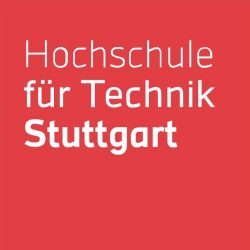Citizen participation is a major driver of democratic and socio-economic development, as well as a key method of citizen empowerment (NDI, 2021). Involving citizens in urban planning processes can help create a sense of community, generate valuable ideas, and increase acceptance of planning proposals (OECD, 2019). Facilitating citizen participation may help achieve these positive outcomes.
Kesselkompass3 – Inform, Involve, Cooperate – is an innovative 3D platform that enables citizen participation processes to take place online. The platform, developed by M4_LAB, offers a variety of tools and information to connect urban planners and citizens. On the platform itself, there is a 3D map of Stuttgart which offers several interactions especially for citizens but also planners. In addition, participation projects that have already been completed or are still in planning are presented. The platform has already been used by more than 600 citizens in previous projects and will now be further developed.
In order to investigate the usability and usage acceptance of said platform, four business psychology students from Stuttgart University of Applied Sciences conducted an eye tracking study combined with a quantitative user experience questionnaire and qualitative face-to-face interviews in the business psychology lab. The aim of the study was to generate advice regarding the structure, design, and content of the platform for M4_LAB. In addition, the acceptance of the name “Kesselkompass3” was investigated.
To achieve the aforementioned aim, we assessed the status quo of the platform with regard to usability and acceptance. Additionally, we examined the comprehensibility of the texts and the color concept. For this purpose, it was to be determined whether the texts provide sufficient information to gain a general understanding of the platform and the projects that have already been carried out and are described on the platform. When examining the usability of the web interface, the intuitive operation on the one hand and the comprehensibility of the dichotomy in the display, on the other hand, were to be assessed.
Our sample consisted of n=5 experts with a professional background in urban planning and n=10 citizens from Stuttgart. The study was conducted in the business psychology lab in compliance with the current Corona regulations of the state of Baden-Württemberg and the hygiene concept of the Stuttgart University of Applied Sciences.
![]() Source: Linda Frey
Source: Linda Frey
After calibration of the eye tracker, the test subjects clicked through the 3D participation platform on the basis of a use case. Regarding the eye tracking we defined areas of interest, which could then be examined more closely by eye tracking. By defining such areas, a statistical analysis of key figures on the eye movement of the subjects in SPSS becomes possible. By means of the eye tracking, fixations (points that are looked at closely), saccades (fast eye movements), and multiple regressions of existing eye movements of the test subjects can be recorded.
In the second step, the quantitative questionnaire embedded on the platform was completed via Unipark. In the last part of the study, a qualitative interview was conducted using an interview guideline in order to obtain a more differentiated opinion of the test subjects and to obtain suggestions for improvement.
The analysis of the data showed that the majority of our sample was rather satisfied with the overall usability, font size, color scheme, and structure of the platform. However, they wished for more pictures and illustrations, as well as a better clarity of the content (less continuous text and more headlines). Furthermore, our participants commented on the performance and browser compatibility of the platform. They wished for more explanations on the platform itself and of the available tools. Regarding the acceptance of the name our participants suggested the simpler name „Kesselkompass“.
In consideration of the results, the platform is to be revised again in order to make future citizen participation processes efficient and successful.
The concept and realization of this study was supported by students of HFT Stuttgart – University of Applied Science: Linda Frey, Julia Holzapfel, Tobias Reulein and Fabian Seeger.
References:
NDI. (2021). Citizen Participation. NDI. Retrieved from https://www.ndi.org/what-we-do/citizen-participation
OECD (2019), The Governance of Land Use in Korea: Urban Regeneration, OECD Publishing, Paris, https://doi.org/10.1787/fae634b4-en .



